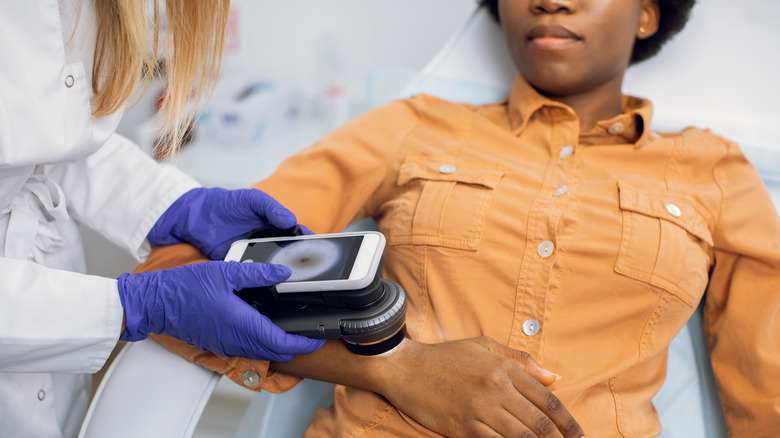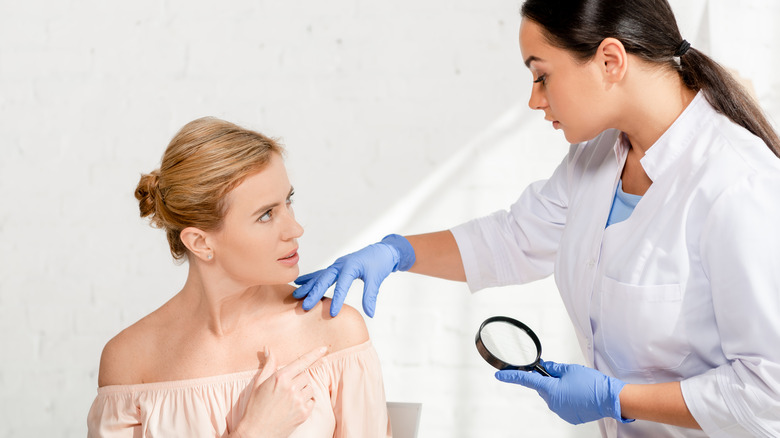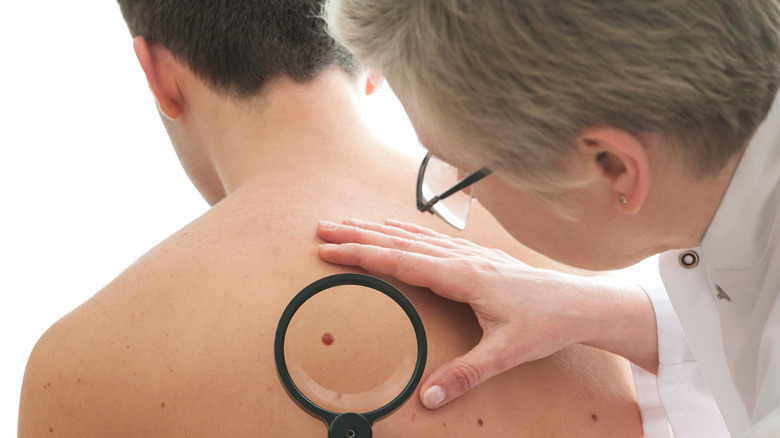Why Winter Is A Great Time To Get Your Annual Skin Exam, According To A Dermatologist
Beginning in your 20s or 30s, it is recommended to start scheduling a full-body skin exam with your dermatologist every year, according to the Dermatology Treatment and Research Center. From the top of your scalp down to between your toes, your physician will be on the lookout for any changes or abnormal spots on your skin. In doing so, annual skin exams can help catch any potential indications of skin cancer early on.
Health Digest spoke with Dr. Paul Curtiss, board-certified dermatologist with U.S. Dermatology Partners Carrollton, who explained that certain times of the year may be better to schedule your annual skin exam than others. "The winter can represent a good time to get a skin exam, as often people may have less skin exposed and are less likely to have a suspicious mole or growth noted by someone else," Dr. Curtiss stated. "People also may have more time after or around the holidays, when they can schedule a routine skin exam," he says.
What you can expect during your skin exam
"Generally, you can expect a full examination of your skin (checking from head to toe) to evaluate for suspicious moles or skin cancers," Dr. Curtiss told Health Digest. In addition, he states that your dermatologist will also address any abnormalities they want to keep an eye on. "Your doctor may take note of any lesions that are concerning for future monitoring," he says. "Additionally, this will give you an opportunity to ask your physician about any new or changing lesions that you are concerned about."
Dr. Curtiss goes on to explain how doctors go about examining skin lesions more closely. "A physician may use a specialized magnifying glass to evaluate lesions with polarized or non-polarized light," he says. "This allows a doctor to better see smaller features of spots. If a physician finds a new or concerning lesion, the spot may be photographed and measured for future monitoring, or a small sample may be taken during the same day to ensure it is not skin cancer," he states.
Dr. Curtiss adds that non-concerning skin marks may not be addressed during your exam, so be sure to ask any questions you may have. "You shouldn't hesitate to ask your physician regarding any spots that are concerning to you. [Such as] benign, normal, and non-harmful growths, including birthmarks a physician may not bring up. "
What dermatologists are on the lookout for during a skin exam
"As a physician, my priority is generally to evaluate the skin for any lesions that could be threatening or harmful to the patient's health," Dr. Curtiss explains. Specifically, he says that he's often on the lookout for moles. "I look for moles that are irregular or exhibit a different or concerning pattern when compared with a patient's benign or healthy moles," he states. "I may look closer with a specialized magnifying glass using both polarized and unpolarized light to better evaluate for abnormal growth patterns or blood vessels," he adds.
In the event that Dr. Curtiss identifies a particularly suspicious spot, he explains that he then begins forming a treatment plan. "If a spot is sufficiently concerning, I generally come up with a plan with the patient for further monitoring or treatment. This may include documenting, photographing, and re-evaluating at a scheduled interval or doing a small sample of the lesion called a biopsy," he says. Concluding the interview, Dr. Curtiss explains that he finishes a skin exam by reviewing preventative strategies with patients. "I review healthy skin habits including protecting the skin from the sun and concerning signs that may tip patients off that they should come in for an exam prior to their scheduled visits."



